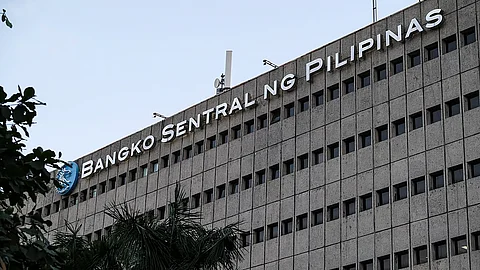
- NEWS
- the EDIT
- COMMENTARY
- BUSINESS
- LIFE
- SHOW
- ACTION
- GLOBAL GOALS
- SNAPS
- DYARYO TIRADA
- MORE

The country may experience slower inflows of funds from its global financial transactions or balance of payments (BoP) this year and next, due to sluggish exports and investments amid Trump’s tariffs and geopolitical tensions.
The Bangko Sentral ng Pilipinas (BSP) projects the BoP deficit to widen to $6.3 billion this year from the $4 billion estimate it announced in the first quarter of the year.
For next year, the Central Bank expects the deficit to soften to $2.8 billion from $4.3 billion. The BoP deficit represents 1 percent of the country’s gross domestic product for both periods.
The BoP deficit will reflect less export income this year at $54.5 billion, down from the previous estimate of $55.6 billion. However, BSP projects exports to recover next year, reaching $55.6 billion.
While economists suggested that the Philippines could boost exports outside the US to avoid Trump’s tariffs, the BSP stated that “logistical inefficiencies and workforce limitations continue to raise barriers.”
“Goods exports continue to face headwinds from global trade uncertainty, lagging competitiveness, and constraints in the semiconductor industry,” BSP added.
Similarly, BSP said that inflows of foreign direct investment could slow as investors continue to minimize the impacts of Trump’s tariffs, including faster US inflation and higher debt.
Given the gloomier US economic outlook, Moody’s recently downgraded its credit rating on US government bonds by a notch to Aa1 from Aaa, signaling demand for higher interest rates from corporate bond issuers worldwide as government securities are considered less risky.
“Foreign investment inflows remain positive but subdued, as policy uncertainty and the global slowdown weigh on investor sentiment,” BSP said.
BSP projects lower investments at $13 billion this year from the initial estimate of $16.2 billion. For next year, the Central Bank said the level could stabilize at $13.2 billion.
Given the weaker global trade and investments, BSP said the country’s foreign currency reserves could fall to $104 billion this year from the initial outlook of $105 billion. BSP expects the reserves to reach $105 billion next year.
Stable sectors
BSP said income from service exports will remain relatively stable at $55.1 billion this year from the previous outlook of $56.1 billion, before rising to $59.5 billion next year.
In particular, revenues from business process outsourcing could grow steadily at $33.5 billion this year and expand to $35.2 billion in 2026.
“Outsourcing revenues are supported by stable demand for contact center services, yet they confront uncertainties due to US job reshoring initiatives and local talent shortages,” BSP said.
Tourism revenues this year are projected to slightly decline to $10.7 billion from the previous estimate of $10.8 billion due to growing competition from other destinations and rising transport costs. For next year, BSP said the revenues might increase to $11.9 billion.
BSP also sees steady growth in cash remittances from overseas Filipino workers this year at $35.5 billion and an increase $36.5 billion in 2026.
“Steady remittance flows continue to provide a buffer against trade deficit, supported by strong labor demand for Filipino workers in key sectors as well as by the aging populations in host countries,” BSP said.
